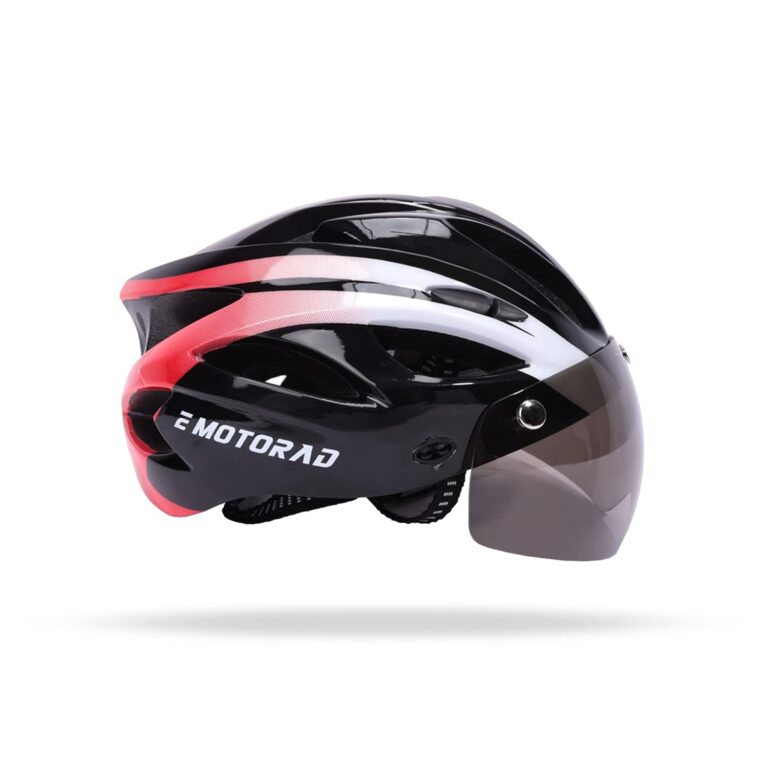Advancements in Safety and Comfort: Integrating Technology in Road Bike Helmets

Key Point Summary of Integrating Technology in Road Bike Helmets:
- Emerging Tech in Road Helmets: Exploring new technological advancements for enhanced safety and convenience.
- Smart Helmet Features: Delving into built-in GPS, communication systems, and safety sensors.
- Selecting the Right Tech-Enhanced Helmet: Guidance on balancing technology, comfort, and safety for optimal road biking experience.
Drawing from my extensive journey in various cycling forms, including mountain, gravel, cyclocross, and particularly road biking, I’ve observed remarkable progress in cycling equipment. For those starting out or at an intermediate level, the adoption of technologically advanced road bike helmets can significantly enhance their cycling experience.
Emerging Tech in Road Helmets
The advent of tech road helmets is redefining what we expect from our gear. These helmets aren’t just protective shells; they’re smart gadgets. From my first encounter with a GPS-enabled helmet, I realized the potential for technology to transform our riding experience.
Smart Helmet Features
With the rapid advancement in integrating technology in road bike Helmets, we’re witnessing a revolution in road bike helmet technology. This progression is not just about protection; it’s about enhancing the entire cycling experience through innovation. In the realm of smart helmet features, these technologies are redefining what we expect from our cycling gear, making every ride safer, more connected, and enjoyable. Let’s explore these advanced features that are setting new standards in helmet functionality and safety for road cyclists.
GPS and Navigation
Built-in GPS in helmets like the Lumos Ultra Smart Helmet has revolutionized navigation for road cyclists. It’s a feature that once helped me navigate back on course during a long and confusing ride.
Communication Systems
With its integrated communication system, the Sena R1 Smart Cycling Helmet enhances group riding dynamics and safety, a feature I’ve found invaluable during group outings.
Safety Sensors
Helmets like the Specialized Prevail II Vent with ANGi come equipped with crash sensors, offering peace of mind, especially for solo riders on remote routes.
Selecting the Right Tech-Enhanced Helmet
Choosing a tech-integrated helmet involves more than just picking out the coolest features. It’s about finding the right balance between innovative technology and fundamental aspects like comfort and safety. The helmet should fit well, be adequately ventilated, and still provide the essential protection expected from a road biking helmet.
One model of road bike helmet that is well-suited for tech upgrades is the Livall BH60SE. This helmet is designed with integrated technology capabilities, making it a great choice for cyclists looking to enhance their riding experience with advanced features like built-in lights, turn signals, and Bluetooth connectivity for communication and music. Its design allows for easy integration of these modern technologies, making it a popular choice for tech-savvy cyclists.
FAQ
What is the technology in cycling helmets?
In the context of integrated technology in road bike helmets, the technology often includes features such as MIPS (Multi-directional Impact Protection System) for enhanced safety, built-in GPS for navigation, Bluetooth connectivity for communication and music, and sometimes integrated cameras.
Additionally, smart lighting systems for increased visibility and safety sensors that can detect impacts and alert emergency contacts are becoming more common. These features aim to enhance safety, convenience, and the overall cycling experience.
What is the new technology in helmets?
New technologies in cycling helmets, particularly in the context of road biking, include advancements like MIPS for added safety against rotational impacts, and WaveCel technology, which aims to protect against both rotational and direct impacts.
Other innovations encompass integrated LED lighting for visibility, Bluetooth connectivity for communication and entertainment, and even smart features like crash detection sensors that can alert emergency contacts. These technologies are designed to enhance safety, functionality, and the overall riding experience.
Does MIPS technology really work?
Yes, MIPS technology in cycling helmets, including those for road biking, is effective. MIPS, which stands for Multi-directional Impact Protection System, is designed to reduce the rotational motion transferred to the brain during an angled impact, which is common in cycling accidents.
This technology adds a layer of safety by allowing the helmet to rotate slightly around the head upon impact, potentially reducing the risk of brain injuries. Its effectiveness has been recognized and valued in the cycling community, making it a sought-after feature in modern helmet design.
Final Thoughts
Integrating technology into road bike helmets isn’t just about keeping up with trends; it’s about enhancing the cycling experience in terms of safety, convenience, and enjoyment. Whether you’re a beginner or an intermediate cyclist, the right tech-enhanced helmet can elevate your rides to new levels of enjoyment and safety.
John






